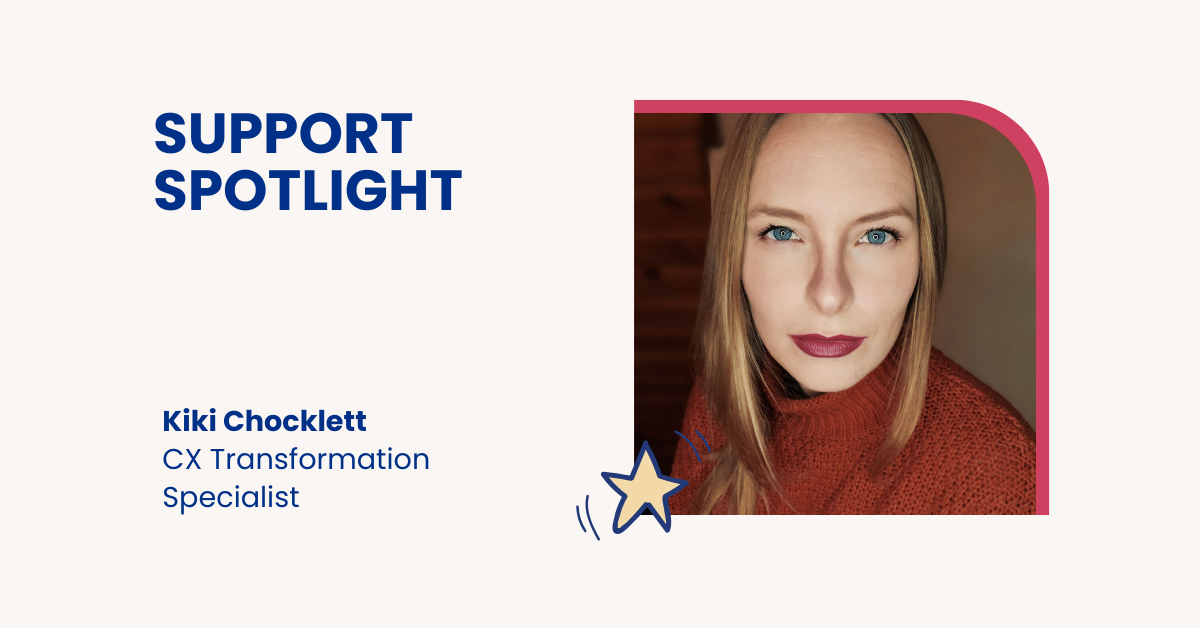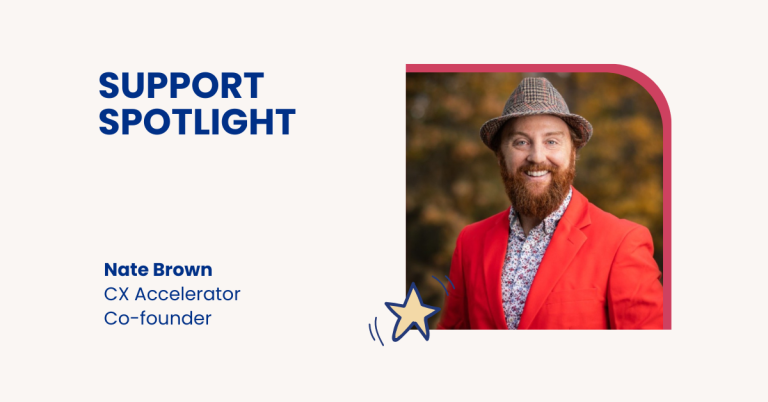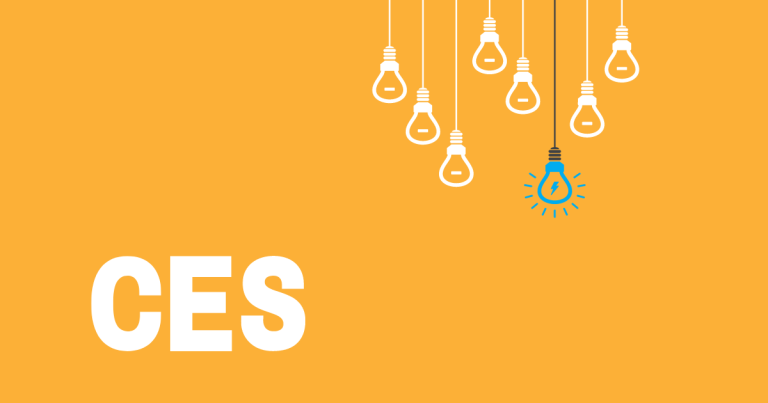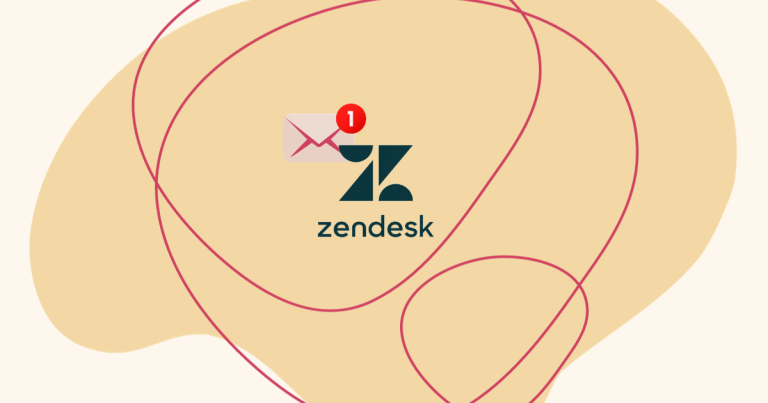In this insightful interview, we dive deep into the world of customer experience transformation with the exceptional CX specialist, Kiki Chocklett. Kiki’s journey from a service worker at the age of 15 to a seasoned CX advocate is a testament to the power of passion and continuous growth. With a keen focus on the intersection of technology and humanity, Kiki shares her thoughts on the role of AI and machine learning in CX and offers valuable advice for aspiring CX practitioners.
How was your journey toward CX? How did you end up working in CX?
I was a service worker, starting at the young age of 15. Back then, I was more focused on my passion for music and art, and never really imagined myself in the world of business. However, things took a turn when I landed an assistant job for a CEO of a successful small business.
The CEO was very focused on customer-centricity as a means to improve the product and grow the business. As I went about my tasks like folding socks and hanging pictures, he would often explain his thought processes to me. Eventually, I started taking on direct work for his business.
Over time, I became a full-time customer experience (CX) advocate. My days were divided between talking to customers, resolving their issues, and collaborating with the entire team to enhance the overall experience. My focus grew from frontlines work to knowledge base development, customer journey improvement, and coaching new team members. Successfully resolving challenging cases and transforming detractors into raving promotors became my specialty. I used this skill to help target improvement t efforts and was promoted to being a specialist who worked closely with product development, PR, campaigns, and new product releases.
Little did I know at the time how much value this experience would bring me later in life, but that’s how I got started in the world of CX.
What process do you follow when you start working with a new client to improve their customer experience?
I am currently a freelancer specializing in CX strategy and building top-tier customer success departments. I prefer working with small businesses or smaller brands that value a “customer service culture” and have the potential to be truly cross-functional in their operations. Each day in my work is different, and I embrace the freedom to follow my own process, prioritizing holistic wellness in every aspect of my life.
Customer experience innovation is a process that involves making many small improvements in various areas to achieve better long-term results. With a strong data-driven environment, we can connect our efforts to amazing business outcomes – but we also must look at the big picture and accept that foundational improvements are always worth it and take time to fruit.
My approach is to create structure where there is none, find clarity where there is confusion, simplify where things are complex, and build a sustainable customer-centered culture. It’s a continuous journey of mastering the basics. Plus, optimizing for efficiency is one of the keys to making innovation efforts “self-funding.” (Have to thank “Chief Customer Officer 2.0” by Jeanne Bliss for many of these insightful truths.)
I’ve worked with firms in a variety of phases. Some are investing in growth, others are drowning in volume, and some are ready to delegate leadership and move on to new ventures. Occasionally, I help build a customer success environment from scratch – which is a real treat.
For clients who are already established, there is usually something that was neglected in order to grow. In my initial assessment, I search for poorly performing metrics and significant pain points that build detractors and cause attrition. We then examine how to mitigate or resolve these issues swiftly before we move on to innovation.
Once we address urgent issues, our priority is to establish a shared understanding of the current customer journey and the overall current state. We may need to build a journey map, clean up analytics, uncover customer feedback, and align executives on priorities before that happens.
To build our improvement plan, we evoke a shared vision of the world we want to create, and how we want people to feel, and define how to build an environment that will facilitate our desired outcomes. We enhance the environment with clear intentions, KPIs, and tracking systems, and begin building momentum through execution. There are many pivots, tweaks, and unknowns along the way – that’s just the work.
As a creative person, how do you balance your creative side with the business demands including the need to report the results you’re achieving for your clients?
As a CX practitioner, I see my unique job as bridging the gap between the intangible and the tangible. True CX work, in its highest form, is a cross-functional role that collaborates with C-suite executives and all other stakeholders. Part of the CX practitioner’s role is taking vision and transforming it into reality, which is a recurring theme in our work. When it comes to creativity, I believe we should invite CX practitioners to embrace their ability to explore the intangible, the non-linear, and the subjective experiential space. It is in this realm that the catalyst for our work lies. However, we also have a responsibility to ground these concepts, build structure, and bring them to life. Nurturing that aspect of ourselves, perhaps reconnecting with our inner child, is essential.
Developing a sense of creativity and play can be difficult, especially when the cultural environment around us does not necessarily foster it. Therefore, I encourage anyone involved in this line of work to examine their environment and approach to life, identifying what needs to change in order to tap into that space of creativity and inspiration.
In reporting results to clients – being reliable, pragmatic, objective, and structured is key to engaging them in the process. Customer experience innovation is gritty – oftentimes shame-inducing when we consider working with detractors, criticism, and disappointment. If we effectively build trust – we can invite everyone along into a higher sense of play and creativity within the work.
You work as an external consultant for your clients, offering a different perspective than those involved in daily work. How do you help translate the leadership vision to the rest of the organization while maintaining a focus on customer experience?
I believe that one of the main challenges in the CX field is the presence of power hierarchies within organizations. It’s difficult to engage stakeholders who are already overwhelmed and struggling to prioritize their tasks in caring about a larger vision. However, as practitioners, we must work within and navigate these systems because that’s the reality of how things currently operate.
If I’m to consider myself from a possible outside-in perspective, I am most effective when I engage awareness, acceptance, sensitivity, compassion, accountability and have a willingness to anchor my beliefs, values, and point of view. This path doesn’t always attract swaths of high-ticket clients – but it’s honest. I am a transparent person and work hard to build authentic relationships with the people I do business with and collaborate with.
To answer your question – the key to translating a vision effectively and engaging people in customer-centricity is in building authentic relationships. Do I understand the people I’m engaging with? Do I understand what unites them as a group? Do I know their individual values and drivers? Do I help people connect their own dreams and goals to the bigger picture? Do I build pathways that make it possible for them to enhance their lives and their work, alongside the customer? We don’t always get it 100% right here – but this is the way.
The work we do in customer experience innovation impacts lives. We should move with this knowing.
What do you see as the main challenges for CX professionals?
One of the main challenges in CX is the lack of shared definitions and understandings. Not everyone has the time or space to explore methodologies and concepts related to CX. Access to power plays a significant role in truly understanding the impact of CX on a holistic level. I had the opportunity to be mentored by executives in my early days, which allowed me to engage with the C-Suite more easily and connect efforts to high-level performance. However, not everyone has such access, and many CX workers find themselves in silos within large enterprise systems.
The range of talent and function within the CX space contribute to the challenges of establishing shared definitions and points of view. Furthermore, the rise of professional thought leaders in the field has led to the fragmentation of concepts and the constant rebranding of CX-related terms. Whose brand do we trust? Are they just saying the same thing 100 million different ways?
This lack of cohesion and shared understanding prevents the CX community from becoming a unified force in the marketplace. I’m honestly moving away from the language myself – maintaining the principles while getting back to my roots in customer service and operations.
As a community of practitioners, we need to address these challenges. Efforts have been made to create a shared definition and knowledge base, but it remains dense and inaccessible to newcomers. Additionally, while the work itself is endlessly complex, the concepts of customer-centricity should be simple. It’s simply doing business the smart way. Lastly, the term “CX” has also been adopted by firms in different ways, leading to confusion about the hiring and placement of CX functions. It’s a mess.
Customer-centricity is vital for business survival, and it should be taken seriously. However, putting it into practice often remains misunderstood and undervalued. To drive change in CX, we need cohesion within the community. Fractured efforts with good intentions are likely to fail. As practitioners with varying degrees of power, we have a responsibility to come together, support each other, and play to our strengths. I have faith in the CX community and its potential to overcome these challenges. We are a resilient group of change-makers who can drive meaningful transformation.
How does technology support your work and benefit CX professionals? What excites you the most about artificial intelligence and its potential to revolutionize the world of CX and the work of professionals in the field?
Technology is always a double-edged sword. It can be a great partner in analysis, innovation, and expansion. However, if we pour all our work and reliance into technology, we sever our connection to our immediate environment, even straining our most intimate relationships at times. And when disaster strikes and our entire livelihoods depend on this technology functioning flawlessly, well, that’s a problem. I say this while gleefully staring into a Zoom call. I’m not going to be doing too well without these cool tools.
Artificial intelligence and machine learning are wild. Trust me when I say – it’s fun to explore. And its potential is beyond my comprehension. I’m also reminded of Marie Kondo’s question: “Does this spark joy?”
In my view, the true potential of customer experience (CX) work lies in deepening the human experience, fostering meaningful connections, building more accessible systems, repairing wrongs, and co-creating our evolving world. So, when we evaluate AI and machine learning tools to deepen our work, we should ask: “Does this spark humanity? Does this help us co-create? Does it improve accessibility? Does it enable repair? Does it enhance depth and connection, or does it strip them away?”
Personally, I am not a fan of the CX sentiment analysis tools available to the (non-technical) masses. I have not seen any trained well enough to be insightful or valuable. I suppose the potential is there for deepened connections, however. If it were 100% accurate – could it help us read between the lines? But how would we react to that? Would we honor it? Would we exploit it somehow?
In the CX world, AI and machine learning also have the potential to automate processes and workflows, freeing us up for more meaningful work. They come in handy for tracking trends within ticketing systems and resolving basic problems that customers don’t want to interact over.
I think any issue I have lies more with humanity. What will those in embedded in power do when workers have more capacity? Improve lives? What about those new to power via these tools? What will they do?
I’d love to see a world where we use this technology in a harmonious way. Our priority should aim towards bridging connections, improving society, and tapping into our co-creative power. If our reliance on these tools starts stripping away that depth and diminishing our humanity, it’s crucial that we critically examine their impact and reassess their usage.
What advice would you give to someone starting their career in customer experience?
Every business, in some way or another, has customers, whether it’s B2C, or B2B. So, regardless of where you find yourself today, whether it’s at a fast-food joint or an office job at a dentist’s office, it’s essential to develop a curiosity about customer experiences and cultivate an outside-in perspective. Try to see how everything is interconnected and be curious about your role within that system.
While there are emerging higher education programs focused on the art of CX, it’s important to remember that many of us practicing CX today came from various backgrounds and pathways. For instance, I don’t have a college degree. I started as a fast-food manager, played in rock’n’roll bands, and ventured into entrepreneurship. Yet, here I am. So, if you feel drawn to this field, know that our community of CX practitioners is here to embrace you, help you develop principles, skills, methodologies, connections, and most importantly – your own unique CX blueprint.
Lastly, remember that CX can be practiced in a variety of roles. You don’t need to have “CX” in your job title to make a difference in the customer experience realm. You can decide for yourself, today, that you want your actions to align with making things better for people. And I hope you include yourself in that.

Kiki Chocklett
Kiki Chocklett is a creative and versatile customer experience specialist with a passion for building remarkable experiences and streamlined operations. Her extensive industry knowledge and expertise span direct-to-consumer goods, wholesale commerce, perishables, lifestyle products, gadgets, gear, software, hospitality, service businesses, community programs, and more – all of which have helped foster growth and innovation for many small and dynamic teams. Kiki is dedicated to creating nurturing environments where people can be present and come together for unique and enriching human experiences. She strives to develop cultures, systems, products, services, and touchpoints that bring out the best in everyone.
Did you like the post?
You might also like:

Surveypal
Everything you need to lead and improve your customer experience. Learn more at surveypal.com, or






